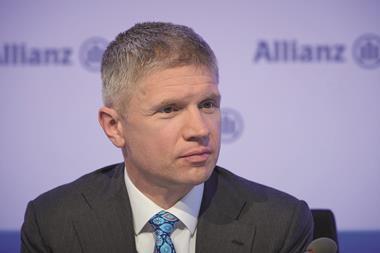As anyone who has travelled around both India and China can attest, India lies a couple of decades behind China in terms of the quality of its infrastructure.
This provides both frustrations and opportunities for investors. To create infrastructure that is on a par with China’s will take many years and gargantuan amounts of investment. Finance minister Arun Jaitley has estimated that India required $646bn (€590bn) over the next five years alone, 70% of which would be required in the power, roads, and urban infrastructure sectors.
How well money is spent on infrastructure is as important as how much money is spent. To that end, economists and policy makers such as Ajay Shah – a professor at the National Institute for Public Finance and Policy in New Delhi – have long argued that the private sector should play a greater role in financing infrastructure in India.
For investors, this sector also offers a potentially attractive and relatively low-risk strategy for taking advantage of India’s undoubtedly attractive long-term growth rates. For India itself, Shah argued that private ownership would give better hardware, as such investors care about what is being built. It would also give better safekeeping of the assets. He argued that private owners would strenuously push for adequate user charges, and act as a counterweight against the biases of the Indian political system in favour of low user charges and hence a burden upon the exchequer.
The private sector is willing to walk away from unviable projects, in contrast to governments, which will build infrastructure in respond to political pressures. Shah made the case that Indian public finance would be better off with its balance sheet freed from infrastructure assets, with these instead held by listed utilities companies issuing debt and equity. By accessing global investors it is possible to deliver low-cost financing.
With increasing interest in India from foreign investors, it might seem surprising that recent years have actually seen a marked drop in the share of private sector financing of infrastructure projects in India. From 2003 to 2011, there was a massive increase in private sector financing of infrastructure projects. By 2011, there was a stock of roughly $400bn of private infrastructure investment projects that were under implementation, according to Shah.
But in the years following, the value of private infrastructure projects receded substantially to the tune of around $80bn in nominal terms. If inflation were taken into account, it would amount to a decline of 25%. In contrast, public sector financing of infrastructure has seen a steady growth since 2011, so the overall level of investment remained reasonably stable.
It is not clear why private sector investment has declined. The original logic in favour of greater private participation in infrastructure remains unchanged. As Shah argued, the private sector would use capital more effectively, deliver a better incremental capital-output ratio, and take care of assets better. The compositional shift in favour of public infrastructure projects he saw as a weakness in India. The reason for the shift, he speculated, might be that in the first wave of private sector participation the Indian authorities did not adequately understand that it required complex institutional machinery.
Instead of addressing the issues to enable private sector involvement, Shah said there had been an excessive willingness to give up on private sector participation and make do with muscular state-led investment. Such centrally planned projects have their strengths, but as the experience of China has also shown, there is a risk of large investments producing low returns in terms of incremental GDP per unit investment.
For foreign investors, infrastructure investment in emerging markets could potentially offer attractive yields with relatively low risks and large capacities, albeit illiquid. India, with its political stability, should be able to provide infrastructure investments at attractive yields and risk levels for long term pension and sovereign wealth funds.
It would be a shame both for India and for foreign investors if a framework could not be developed that gave them the comfort to invest in Indian infrastructure.


























No comments yet